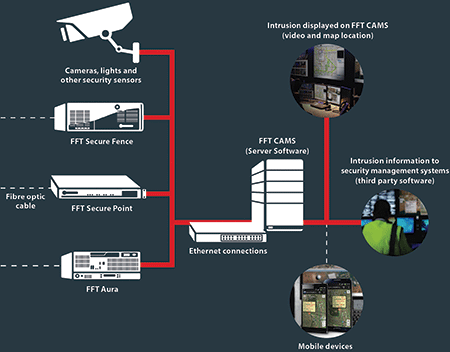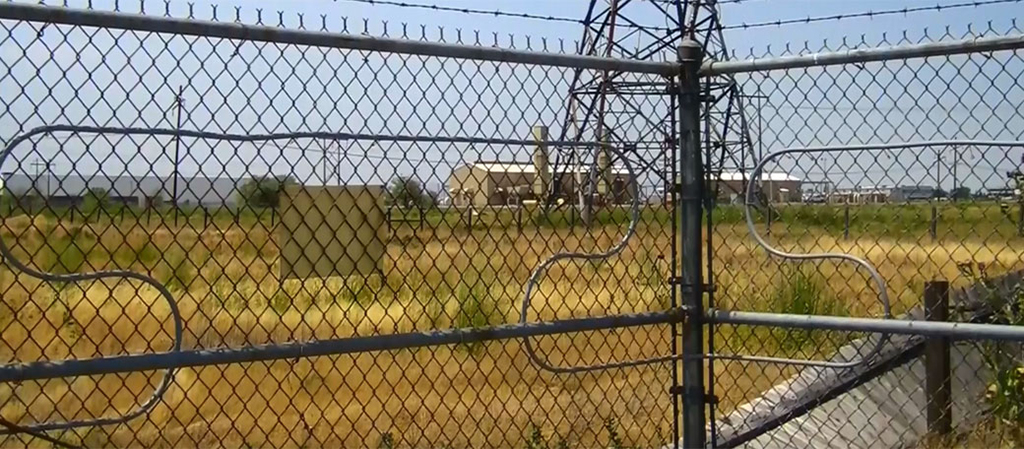How Fiber Security Helps Prevent Unauthorized Access and Boosts Monitoring
The Ultimate Guide to Fiber Optic Protection Equipments for Your Company
In an age where safety and security concerns are vital for businesses, recognizing the details of fiber optic innovation can be transformative. This overview details exactly how incorporating fiber optic security systems not only boosts data defense but additionally uses benefits like resistance to interference and real-time monitoring abilities.
Comprehending Fiber Optic Technology

The core of a fiber optic cord contains a thin glass or plastic center, surrounded by a cladding layer that mirrors light back right into the core. fiber optic security system. This design makes certain marginal loss of signal stamina, even over considerable distances. There are two main kinds of fiber optic cords: single-mode and multi-mode. Single-mode fibers are developed for long-distance transmission, while multi-mode fibers appropriate for much shorter ranges, frequently used within buildings.
Optical fiber are not just faster however additionally a lot more safe and secure than conventional electrical wiring. Their integral resistance to electromagnetic disturbance and the trouble of taking advantage of the signal without discovery make them a preferred choice for services focusing on information honesty and protection. As companies increasingly rely upon protected and reliable communication systems, comprehending fiber optic innovation comes to be vital for informed decision-making.
Trick Benefits of Fiber Optic Safety And Security
When thinking about safety and security choices for a company, the advantages of fiber optic systems are especially engaging. First and foremost, fiber optic technology provides phenomenal information transmission speeds and bandwidth capacity, making it optimal for dealing with high-resolution video clip feeds from surveillance cameras. This ability ensures that protection workers get real-time data, boosting total feedback times to possible safety risks.
Moreover, fiber optic cables are inherently immune to electromagnetic interference, which can jeopardize the stability of conventional copper-based systems. This resistance makes certain that the information transmitted remains safe and continuous, giving an extra reputable safety and security facilities. In addition, optical fiber are less vulnerable to physical damages, as they are made from glass rather than steel, decreasing maintenance costs and downtime.
Fiber optic systems offer boosted cybersecurity functions, consisting of security capacities that protect sensitive information from unapproved accessibility. Jointly, these benefits make fiber optic protection systems a robust option for services looking for to boost their protection steps.
Setup Process and Considerations
Thinking about the complexities Homepage included, the setup procedure of fiber optic safety systems requires cautious planning and execution. The initial step entails a thorough website evaluation to determine optimum areas for cabling and tools. This analysis should think about environmental aspects, existing facilities, and potential susceptabilities.

In addition, the setup needs to conform with local building regulations and industry criteria. This might include coordinating with numerous stakeholders such as building supervisors, IT teams, and safety and security personnel to make sure smooth combination with existing systems.
Post-installation, rigorous testing is essential to verify system performance and identify any kind of problems that may develop. By focusing on these considerations during the setup process, our website organizations can ensure a durable and effective fiber optic protection system that satisfies their details protection requirements.
Latest Technologies in Fiber Optic Safety
Recent developments in fiber optic modern technology have significantly improved the abilities of safety and security systems for organizations. One of one of the most notable technologies is the assimilation of fiber optic sensors that can find vibrations and invasions along the perimeter of a center. These sensors supply real-time monitoring, allowing rapid response to prospective violations.
In addition, the development of distributed fiber optic picking up technology permits for the continual surveillance of large locations with a single fiber cable television. This technique not just decreases installation expenses however additionally improves the reliability of checking systems by eliminating the requirement for several, different sensing units.
Additionally, advancements in multiplexing techniques have allowed services to transmit huge quantities of information over fiber optic networks, boosting the capabilities of video clip security systems. High-def video clip feeds can now be sent out over fars away without loss of top quality, making certain that protection workers have access to clear and actionable info.
Finally, using synthetic knowledge (AI) together with fiber optic systems is reinventing hazard discovery. AI formulas can evaluate data from fiber optic networks to identify unusual patterns or behaviors, permitting for proactive security measures. These developments collectively represent a considerable leap forward in fiber optic security technology.
Picking the Right System for Your Organization
Choosing the suitable fiber optic safety and security system for your company is essential for guaranteeing optimal defense and comfort. To make an educated choice, assess your particular safety requirements, considering elements such as the size of your facilities, the nature of your operations, and potential vulnerabilities.
Begin by reviewing the degree of protection needed; for basics example, high-risk environments may require sophisticated systems with integrated security and intrusion detection abilities. Next off, take into consideration scalability; as your organization expands, your protection system must can broadening to fit enhanced demands without considerable overhauls.
Furthermore, examine the reliability and performance of different systems. Try to find providers with recognized credibilities and consumer endorsements that attest to their service top quality. It's additionally advisable to ask about the technology's compatibility with existing infrastructure, ensuring a smooth combination process.
Final Thought
In verdict, fiber optic protection systems offer a robust service for improving company security infrastructures. The most current technologies further strengthen the performance of these systems, ensuring that services remain secure and versatile in an ever-evolving threat landscape.